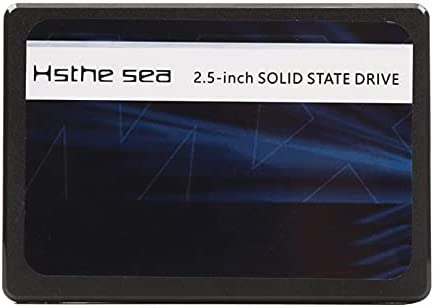“It looks exciting, it looks modern and it looks like the future.” That is what David Tyler, Artemis’ commercial director, told me when I asked him what stands out about Artemis’ EF-24 passenger ferry.
Often I see sustainable transport technology pitched as being exciting, modern and futuristic. However, lately, it’s more like a rinse-and-repeat approach to designing products as companies strive to attract a seemingly wide audience with less polarizing designs.
To me, the merging of sustainability and technology creates an opportunity for creating a future once only imagined in movies — or AI-generated photos like the one above. And that means daring to innovate and yes, being a bit polarizing.
I recently spoke with two companies: Artemis and itselectric. Both companies — Artemis building electric maritime boats and itselectric building Level 2 electric vehicle (EV) chargers — are branching into new design territories within their respective industries.
As society transitions to a more sustainable future, these two companies have decided to stand out.
Foiling through the water with the electrification of ferries
Cities are beginning to retrofit existing ships with electric propulsion or purchase new hybrid electric ferries. But the EF-24 by Artemis is different.
It somewhat follows Candela’s approach of “new-design” thinking by reimagining what an ocean vessel is supposed to look like and integrating hydrofoiling technology, which allows the boat to rise over the water as it moves.
After my CES 2023 experience, I described Candela as the “Tesla of the sea.” Well, the Artemis EF-24 is also like the Tesla of the sea, but one step further: It’s the Cybertruck of the sea. And if Tesla’s Cybertruck’s growing reservation list is any indicator of why it pays to be different, then I see a similar future for Artemis.
While the first EF-24 will start routes from Belfast and Bangor in 2024, I saw a model replica up close, and I can understand why this award-winning boat is grabbing attention. It just looks different in all the best of ways.
Able to carry 150 passengers, with a liquid-cooled battery, while not yet finalized, roughly around 4.2 megawatts, the EF-24 is a 79-foot ferry designed for the future.

Through its hydrofoiling design, the boat will float over the water, improving battery range and efficiency — 83 percent more efficient, to be exact, compared with a gasoline/diesel boat, Tyler said when describing its workboat operating on the water. The EF-24 will use many of the technologies as the workboat.
The overall look and design of a product is just as important as the technology that accompanies it. As Tyler and I spoke, I couldn’t help but visualize what this ferry would look like traveling around New York City. As is likely intended, the EF-24 will transform any city’s landscape and experience with its sleek modern design, large windows and hydrofoiling technology allowing the vessel to hover over the water, all while reducing emissions. That is a package more companies should strive for instead of falling into traditional molds of what something should look like rather than what it can look like.
Artemis isn’t stopping there. The company last week announced the newest addition to its vessel lineup with the Artemis EF-12, a high-end all-electric water taxi equipped with many of the same technologies and visual feel and able to carry up to 12 passengers.
Detachable-cord Level 2 EV chargers finally come to the U.S.
Artemis’ EF-24 will be hard to miss traveling around a city. However, itselectric is striving for the opposite experience with its design, and that’s what makes it stand out to me.
Itselectric is the first company to bring the detachable charging cord model to the U.S. for EV charging. This model is much more prevalent throughout the rest of the world, and it always shocked me that no company dared to bring this model to the U.S. given its many benefits.
The detachable charging cord model is less obtrusive on city streets and does not require large hardware sticking out with cable management headaches as traditional Level 2 EV chargers. Beyond all that, itselectric’s business model is unique in that the company partners with building owners to deploy its hardware on the curb, pulling power from the property owner itself, and lessening the upfront costs from massive utility and infrastructure headaches that come with deploying EV charging across dense urban environments.
Drivers will have to wait to get their hands on their own cord as the company works through this initial pilot with these units currently installed (the next-generation charger will look a bit more developed). If you’re asking me, the technical aspects of the charger itself are not what is most exciting about itselectric, even though the business model is still very exciting. At the end of the day, it’s just your standard 6-7.5 kW Level 2 charger. Those interested can read more about the technical details here.

What’s interesting with itselectric is that the company dared to be different. In an overcrowded market of EV charging companies, deploying the same style Level 2 chargers for city streets, with long ADA-compliant extensions and messy solutions, itselectric stands out while trying to go under the radar.
The charger is sleek and small and takes up virtually no room on the curb since the electronics mostly live within the building property itself.
And among a sea of complicated EV charging stations, I demoed the hardware, and it was as simple and easy to start charging as plugging in both ends, a process lasting five seconds total.
Time will tell how quickly itselectric can scale its product after the pilot stage, how these stations hold up and if consumers actually like how under the radar they are. But, as I sat there listening to speakers during the ribbon-cutting of the first location, the comments of Randy Peers, president of the Brooklyn Chamber of Commerce, stood out to me:
“There is no reason why a building owner wouldn’t have one of these in front of their building, and that is why itselectric is disruptive.”
[Want more great analysis of electric and sustainable transport? Sign up for Transport Weekly, our free email newsletter.]


